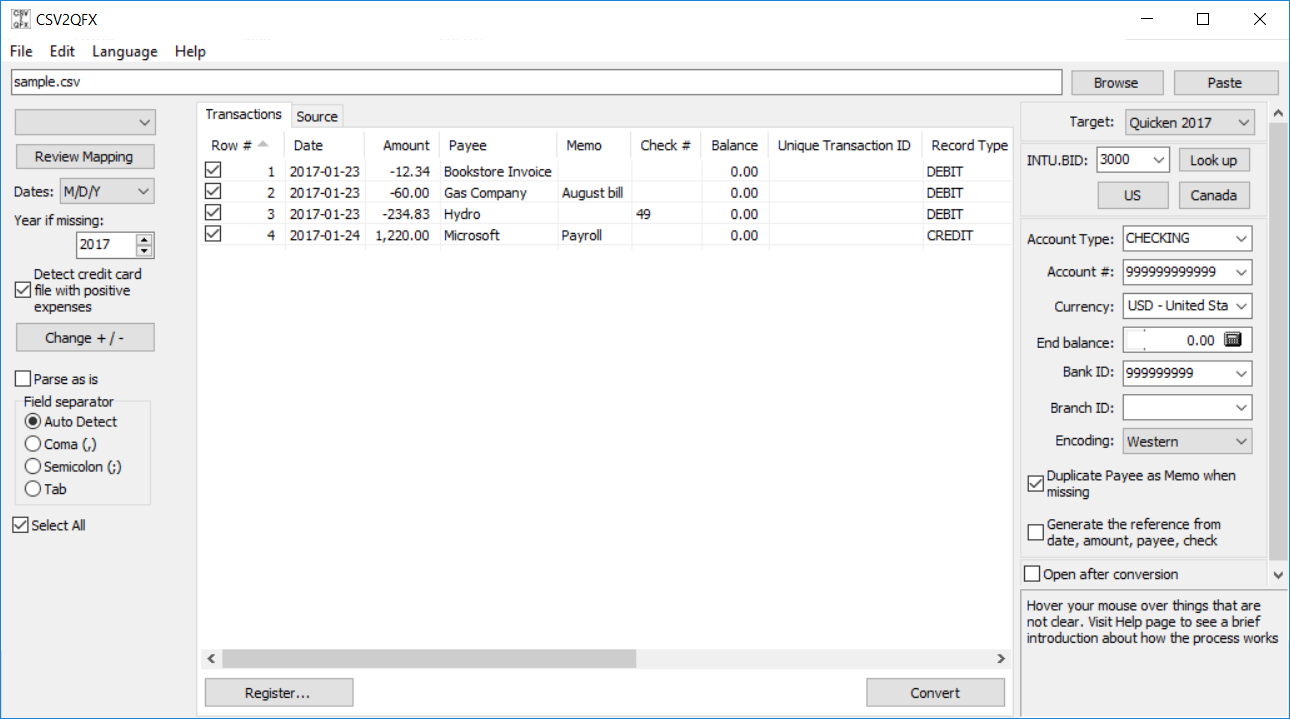

Include Scheduled transactions - If you have scheduled transaction reminders turned on for display in the register, they will be included in the output if this option is selected.Unselected transactions only - Export only those transactions that are currently unselected.Selected transactions only - Export only those transactions currently selected in the register.All visible transactions - Export all transactions displayed in the register.You will then see a window with some additional options.While viewing the register transactions you'd like to export, from the Quicken menu choose File > Export > Register Transactions to CSV File.(If you apply no filters, you can export all transactions in the register.) To export register transactions to CSV Once you can see the transactions you'd like to export, you're ready to go. See also the help topic Finding transactions. You can also filter your register to a specific date range, transaction type, or transaction status.

You can search all visible fields (default) or limit your search to specific fields such as Category, Payee, Notes, etc. While viewing any register you can use the Search field in the top, right corner of the register to search/filter the register being viewed. After copying the list information, you can make changes to the lists at any time.You can easily export transactions from any account register or multi-account register to a Comma-Separated Value (CSV) file, which can be opened in spreadsheet applications like Numbers and Excel. To set up a new file with your existing lists, use Export and Import to copy everything except the transactions from an existing file. Select Business Lists to include invoice items and all templates (only in Quicken Home & Business).Select For Macintosh Users to includes securities, security prices, and the last-saved budget so you can import them to a Quicken for Macintosh file.Select Security Lists to include all your securities, security prices (including price histories), security types, and your investment goals.

Select Memorized payees to make available from QuickFill and the Memorized Payee List all the transactions you had Quicken memorize in the previous file.Select Category List to include the Tag List in addition to your list of categories.Now the QFX file is created, let's switch to Quicken and import. Click the 'Convert' button - click 'Save' - create a QFX file from the CSV file. If you have a CSV file from your bank, you have just to review it and click the 'Convert' button to convert. Select Account List to include all your accounts. So Quicken knows where to import the transactions.Select Transactions to include the data in the account's register or transaction list.In the Include in Export list, select the items to include in the export.To export all transactions, enter the dates of the first and last transactions in your register or transaction list. To export only those transactions that occurred during a specific interval of time, enter the beginning and ending dates of that time interval. In the Quicken Account to Export from list, select the account from which to export transactions.Enter a name in the File name field, and then click OK to return to the QIF Export window. Click Browse to select a different location.Quicken automatically adds the correct file extension. Enter a name for the export file at the end of the existing path (make sure there is a backslash \ before the file name).In the QIF File to Export to field, Quicken displays the preset path of the export file.Choose File menu > File Export > QIF file.

Unless you need to transfer investment or business data, we recommend that you skip the steps below and use QXF export instead. QIF is being replaced over time by new QXF (Quicken Transfer Format) file format. QIF (Quicken Interchange Format) is a legacy file format that is used to transfer financial data between websites and applications.


 0 kommentar(er)
0 kommentar(er)
